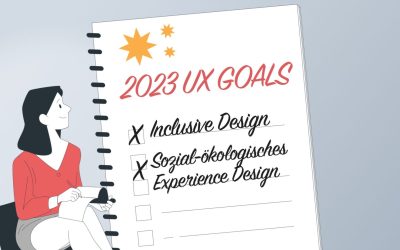There are prevalent misconceptions about User Experience (UX) Design that often distort and diminish the field’s significance. From perceiving UX as solely aesthetic to the notion of its immeasurability, various myths abound. In this series, we examine some common misconceptions and share our insights.
Are you convinced that UX Design is confined to websites and apps? Think again! Dive into this UX myth with us and uncover why it’s crucial for every business, regardless of its nature.
Buckle up for a journey beyond the digital landscape as we debunk the first myth in our series. Let’s dive in!
It’s widely believed that UX Design is solely pertinent to websites or apps. However, the truth is that UX Design encompasses digital and physical products and services, including mobile apps and software, as well as tangible products like household appliances.
To explain why, we have to go back a bit and present our understanding of UX:
Inhaltsverzeichnis:
What exactly is UX, and why does it matter?
In everyday usage, “UX” refers to both a professional discipline (the “UX folks”) and, more importantly, the resulting outcome (the user experience).
As UX designers, we employ various methods to understand what users and customers want and need, crafting products or services that result in a positive user experience.
The ultimate goal of a positive UX is to reduce friction or obstacles between a user’s task and the tool they use to accomplish it.
Numerous factors shape this user experience. No one person or team can claim to be fully responsible for this experience because even though a lot of it is in our hands, some of it is certainly not. But we should do well in the areas that we influence.
UX Design is not limited to digital interfaces; it extends to all aspects of user interaction with a product or service.
Like some others, we do not strictly distinguish between CX, i.e., customer experience and UX, which may also have something to do with how you understand “UX”. Do you see it as more product-oriented or more process-oriented? We see it as more process-oriented; therefore, every interaction with a company, product or service contributes to the user experience. CX and UX continue to pursue a common goal: design-oriented towards people and their context.
From initial contact to post-purchase support, UX significantly influences how users perceive a company and their experiences with its offerings. In an era where users have high expectations for usability and effectiveness, a positive UX becomes a competitive advantage.
For instance, UX Design is crucial for a physical product like Thermomix, ensuring ease of operation and a seamless experience from purchase to first use. Consider the packaging: Is it easy to unpack, or is it challenging? Is the instruction manual clear and concise, or is it overwhelmed with irrelevant information? These elements collectively shape the user’s experience.
Other examples concern newsletter communication – what is the approach here, what is the tone of voice, do I feel comfortable when I read this, or am I more likely to be nudged into constantly buying more products?
UX design plays a role wherever customers and users interact with a product or service.
UX Design also extends to non-verbal communication
The absence of certain features or information communicates a message to users. For example, a lack of contact options also shapes the experiences of customers and users. It may communicate that you want to avoid being contacted, which leaves an impression on customers or users.
As Paul Watzlawick famously said, “One cannot not communicate.”
With that in mind – happy UX myth-busting!
UX Design transcends the boundaries of websites and apps, influencing every interaction users have with a product or service. By understanding and optimising these experiences, businesses can gain a competitive edge and foster lasting relationships with their audience. Don’t limit your perception of UX—embrace its holistic approach to design for unparalleled success.
Ready to enhance your user experience?
Connect with us today to actively shape your digital and physical offerings with expert UX Design!





